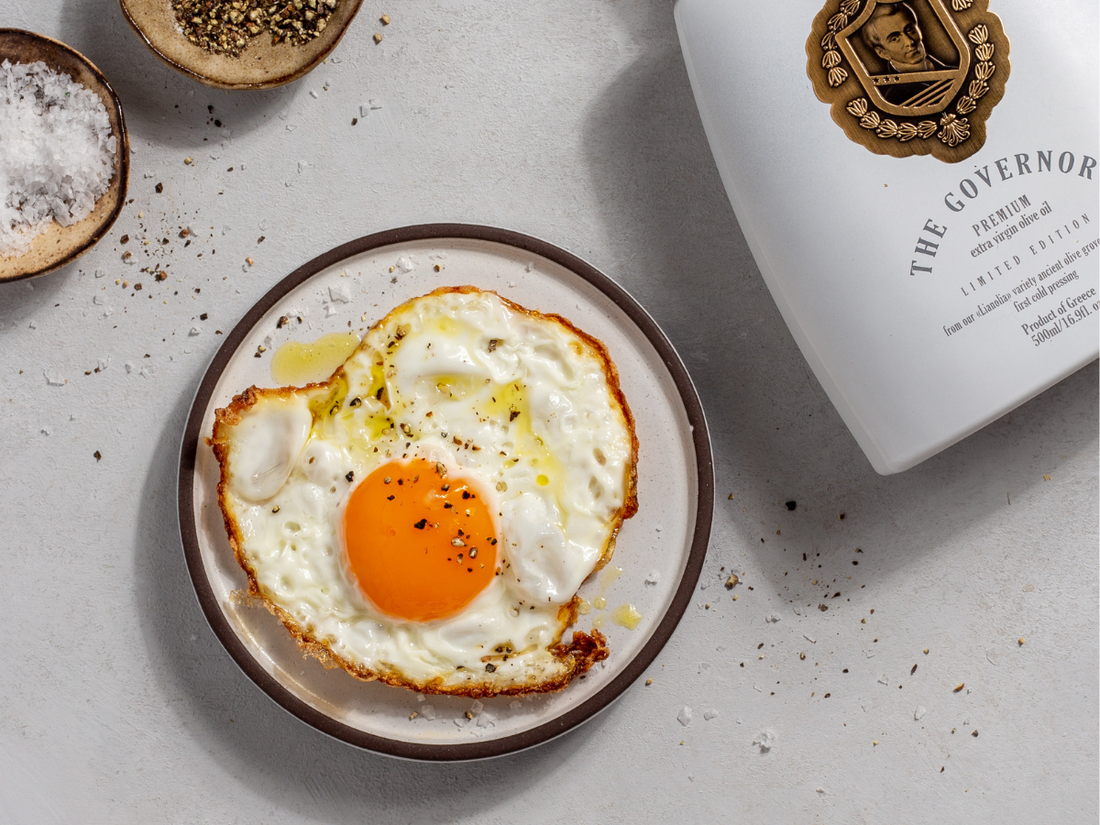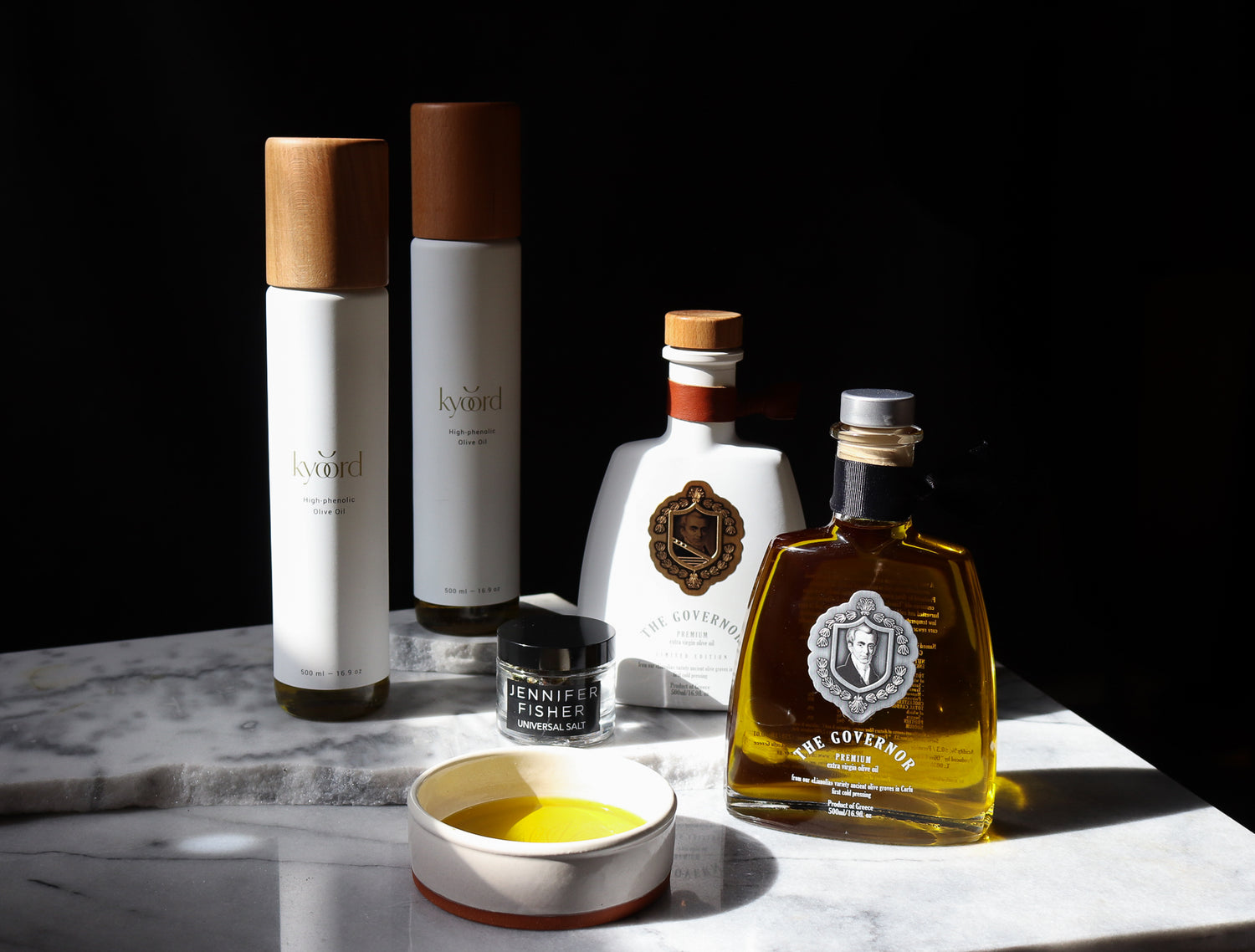Olive oil has long been celebrated for its health benefits and culinary versatility. In Mediterranean cuisine, extra virgin olive oil is the most widely used fat for cooking, baking, sauteing, and frying. A multitude of scientific studies have linked the use of extra virgin olive oil in cooking to its myriad health benefits and positive influence on reducing cardiovascular disease and cancer rates.
Yet, in America, there is a myth that olive oil is not suitable for cooking because of its “low smoke point”. Many “experts” caution against using olive oil in cooking and encourage the use of alternative fats such as avocado oil and coconut oil because of their supposedly higher smoke point. Are these claims based on scientific evidence or just hype? If those claims are true, how is it possible that the traditional Mediterranean diet, which features food cooked and fried in olive oil, is found time and again as the healthiest?
Understanding olive oil smoke point and how it influences nutritional profiles and cooking performance is crucial for informed culinary choices. Recent studies have delved into this topic, providing valuable insights into the intricate relationship between olive oil properties, cooking methods, and food quality. While one study examines the results of deep-frying with olive oil, the other explores the relationship between smoke point and cooking safety. Let's dive into their findings.
What is the smoke point of olive oil?
The theoretical olive oil smoke point ranges from 175ºC to 243ºC (337ºF- 470ºF) depending on the type of olive oil (refined, virgin, extra virgin, high quality or low quality). Most Extra virgin olive oils with low acidity have a smoke point of around 207ºC (405ºF). While its smoke point is lower than some other common cooking oils, it has been found to be a superior option in terms of health for high-heat cooking due to its stability under heat and flavor retention.
|
Type of cooking oil |
Smoke Point (ºF) |
|
Extra Virgin Olive Oil |
405 |
|
Virgin Olive Oil |
347 |
|
Olive Oil |
406 |
|
Grapeseed Oil |
514 |
|
Avocado Oil (unrefined) |
387 |
|
Coconut Oil (unrefined) |
376 |
|
Sunflower Oil |
491 |
|
Rice Bran Oil |
459 |
|
Peanut Oil |
439 |
|
Canola Oil |
493 |
Does Smoke Point Matter?
While extra virgin olive oil has a high enough smoke point for most common cooking and baking temperatures. There are cooking oils with even higher smoke points - such as canola oil or grapeseed oil. Are those oils really more suitable for cooking with? A study published in Acta Scientific Nutritional Health explored the correlation between an oil's smoke point and its chemical characteristics under heat. The researchers heated extra virgin olive oil and other common cooking oils up to 240°C (465°F) and exposed them to 180°C (355°F) for 6 hours, evaluating parameters such as oxidative stability, free fatty acids, polar compounds, and fatty acid profiles.
Contrary to common belief, the study showed that the smoke point alone does not accurately predict an oil's performance when heated. Instead, factors such as oxidative stability and the total level of poly-unsaturated fats (PUFAs) emerged as better indicators of oil behavior under heat. Extra virgin olive oil demonstrated superior stability, yielding the lowest levels of harmful polar compounds and oxidative by-products than any of the other cooking oils tested. The cooking oils that produced the highest levels of harmful chemicals were canola oil, sunflower oil, grapeseed oil, and rice bran oil – all of which are high in PUFAs and have high smoke points.
Coconut oil, with a low smoke point of 191 and low levels of PUFAs, closely followed EVOO as a stable oil under heat. Avocado oil (and other virgin oils) produced slightly more polar compounds than EVOO and coconut oil but proved to be the better choice for high-heat cooking than canola or grapeseed oils.
Therefore, the study concluded that extra virgin olive oil is safest for cooking, followed by coconut oil, followed by avocado oil.
Oil Smoke Point and Final Polar Compounds

Credit: Acta Scientific Nutritional Health Volume 2 Issue 6 June 2018 " Evaluation of Chemical and Physical Changes in Different Commercial Oils during Heating"
Can you use olive oil for frying?
A second study, published in the Journal of Food Quality, explored the nutritional impact of different cooking oils on deep-fried foods. The researchers focused on extra virgin olive oil (EVOO), canola oil, and grapeseed oil, assessing their effects on potato chips, chicken nuggets, and broccoli. One of the key findings was that EVOO-fried foods exhibited higher levels of healthy monounsaturated fatty acids (MUFAs) and antioxidants compared to those fried in canola and grapeseed oils. Additionally, EVOO-fried foods had lower levels of undesirable compounds such as trans fatty acids (TFAs) and polar compounds (PCs), contributing to a healthier nutritional profile without compromising taste.
In contrast, deep-frying with canola and grapeseed oils led to increased levels of TFAs and PCs in the fried foods.
The study emphasized the superior performance of EVOO in enhancing the nutritional profile of fried foods, highlighting the importance of oil selection in maintaining nutrition and health benefits.
Can you cook with extra virgin olive oil?
The insights from these studies provide a new perspective of how we view olive oil smoke point and how we choose oils for cooking. When choosing a cooking oil, it's essential to consider other factors beyond smoke point, such as oxidative stability and fatty acid composition. While extra virgin olive oil has a slightly lower smoke point than some other cooking oils, it has consistently stood out in scientific research for its superior stability under heat, nutritional profile, and flavor retention during high-temperature cooking. It has proven to be a great option for sauteing, frying, baking, and grilling.
Parting Thought - the importance of high-phenolic olive oil for cooking
A Study published in Food Chemistry and Nutrition illustrates an experiment involving four olive oils with varying levels of total phenols exposed to different heating conditions. Various chemical parameters were measured before and after heating to assess the impact on the oils. Results indicated that olive oils generally have high smoke points suitable for home cooking, and fresh oils with low free fatty acids and high phenolic content are important for preserving quality and health benefits. Higher heating temperatures and longer durations led to increased oxidation, with oils containing higher phenolic levels producing fewer polar compounds compared to those with lower levels, including refined oils. Significant amounts of total phenols and specific compounds like oleocanthal remained even after heating at moderate temperatures for 10 and 20 minutes, while most squalene remained intact even after heating at very high temperatures. This study suggests that cooking with high phenolic olive oil is healthier than cooking with low phenolic or refined olive oils.
FAQ:
Why not cook with olive oil?
There’s no reason not to cook with olive oil, and any suggestion that olive oil is not safe for cooking has been discredited. Contrary to popular belief, olive oil can be used for frying, deep frying, sauteing, baking, and grilling. It has been found to produce less harmful polar compounds and oxidative by-products compared to other refined cooking oils, like canola oil, sunflower oil, and grapeseed oil.
Is olive oil safe at high heat?
Yes! Scientific research has shown that olive oil can safely be used for high-heat cooking, including frying and deep frying. Not only does it have superior health benefits compared to other common cooking oils, it has also been found to produce less harmful chemicals under heat. Learn more about cooking with olive oil here.
What is the best olive oil for cooking?
Extra virgin olive oil is the best choice for cooking. It has been found to enhance the nutritional profile of foods and yield the least amount of harmful by-products. For even more nutrient retention and flavor, opt for high-phenolic olive oil like kyoord or The Governor.
Does cooking olive oil reduce health benefits?
While there is a slight reduction in antioxidants under heat, the food's absorption of the phenols - antioxidants in extra virgin olive oil - during the cooking process enhances the overall nutritional profile of the food, resulting in an increase in the total phenols. Phenols are important because they promote healthy bodily functions and protect us from toxins.
Can you bake olive oil at 450?
Yes! Extra virgin olive oil is stable and safe for baking. One of the classic desserts of Mediterranean cuisine is an olive oil cake
Which olive oil has high smoke point?
The smoke point of olive oil varies depending on the type of olive oil. However, high-phenolic extra virgin olive oil such as kyoord has one of the highest smoke points of all olive oils and has been found to be the best option for high heat cooking.
Can olive oil go to 350 degrees?
Yes! Olive oil can safely be used for cooking and baking under high heat (even upwards of 350 F).





